Author: Marshall Schott
Brewer: Crow & Wolf Brewing Company
There’s little question that the freshest, highest quality beer comes straight from the tap at the place it was brewed, though not everyone wants to consume their favorite beer on location. For this reason, most breweries offer options for customers to take beer off premises, and a vessel that’s grown rapidly in popularity over the last few years is the Crowler.
Developed in 2002 out of a partnership between Oskar Blues Brewery and Ball Corporation, the Crowler is a hybrid that offers the light and oxygen impermeability of cans with the ability to contain a higher volume of beer, like a growler. While arguably more ideal than other options, Crowlers are typically filled by running beer into them direct from a faucet, creating a vector for exposure to oxygen, which is of particular concern for more sensitive styles like IPA.
Like any quality brewery, Crow & Wolf wants their customers to have the best experience possible with their product, which is one reason they use Crowlers. While kicking it with the brewers from CAW recently, we started talking about our experiences with Crowlers over the years, both good and bad, and our focus quickly shifted to shelf-life, specifically as it pertains to hoppy IPA. It was at his point we agreed to stop with the presumptions and designed an xBmt to test it out for ourselves.
| PURPOSE |
To evaluate the differences between an American IPA served fresh from the tap and one that was stored in a Crowler for 2 weeks prior to being served.
| METHODS |
For this xBmt, we went with a very simple IPA recipe that has been very well received by customers of Crow & Wolf.
A Lil’ Better Than Basic IPA
Recipe Details
| Batch Size | Boil Time | IBU | SRM | Est. OG | Est. FG | ABV |
|---|---|---|---|---|---|---|
| 5.5 gal | 60 min | 60 | 4.1 SRM | 1.06 | 1.01 | 6.56 % |
| Actuals | 1.06 | 1.01 | 6.56 % | |||
Fermentables
| Name | Amount | % |
|---|---|---|
| Pale 2-Row Malt | 11 lbs | 91.67 |
| Carafoam | 1 lbs | 8.33 |
Hops
| Name | Amount | Time | Use | Form | Alpha % |
|---|---|---|---|---|---|
| INCOGNITO - Citra | 5.5 g | 10 min | Boil | CO2Extract | 50.7 |
| INCOGNITO - Citra | 14.5 g | 20 min | Aroma | CO2Extract | 50.7 |
| Citra | 60 g | 3 days | Dry Hop | Pellet | 12 |
| Mosaic | 60 g | 3 days | Dry Hop | Pellet | 12.3 |
Yeast
| Name | Lab | Attenuation | Temperature |
|---|---|---|---|
| Flagship (A07) | Imperial Yeast | 77% | 60.1°F - 72°F |
Notes
| Water Profile: Ca 78 | Mg 6 | Na 6 | SO4 116 | Cl 54 |
Download
| Download this recipe's BeerXML file |
This brew day started by milling the grain, which was transferred to a grist hydrator where it combined with the strike water while going into the mash tun.
Following a 60 minute rest at 149˚F/65˚C, the sweet wort was pumped to the kettle while the grains were being sparged, after which the wort was boiled with hops added at the times listed in the recipe.
With a refractometer reading showing the wort achieved the expected 1.060 OG once the 60 minute boil was complete, the wort was transferred through a heat exchanger on its way to a fermentation tank.
With the wort at 65˚F/18˚C, the yeast was pitched. Over the following 72 hours, the temperature of the fermenting beer was gradually raised to 68˚F/20˚C where it was left for an additional 4 days before a hydrometer measurement confirmed the target 1.010 FG was reached. After dumping the yeast, the dry hops were added and left for 3 days before the beer was cold crashed to 34˚F/1˚C where it sat for another 2 days, at which point the cone was dumped again, Biofine Clear was added, and CO2 was connected to the fermenter. Following 3 days of conditioning, the cone was dumped one last time, then the beer was left for another 4 days to clear up before it was transferred to kegs.
The filled kegs were placed in the cold box and the beer was ready to serve.
At this point, multiple Crowlers were filled off the tap and placed in the same cold box as the kegs. For this initial comparison, the Crowlers were only sanitized prior to being filled, they were not purged with CO2.
Following a 2 week waiting period, the beers were ready to serve to tasters for evaluation.
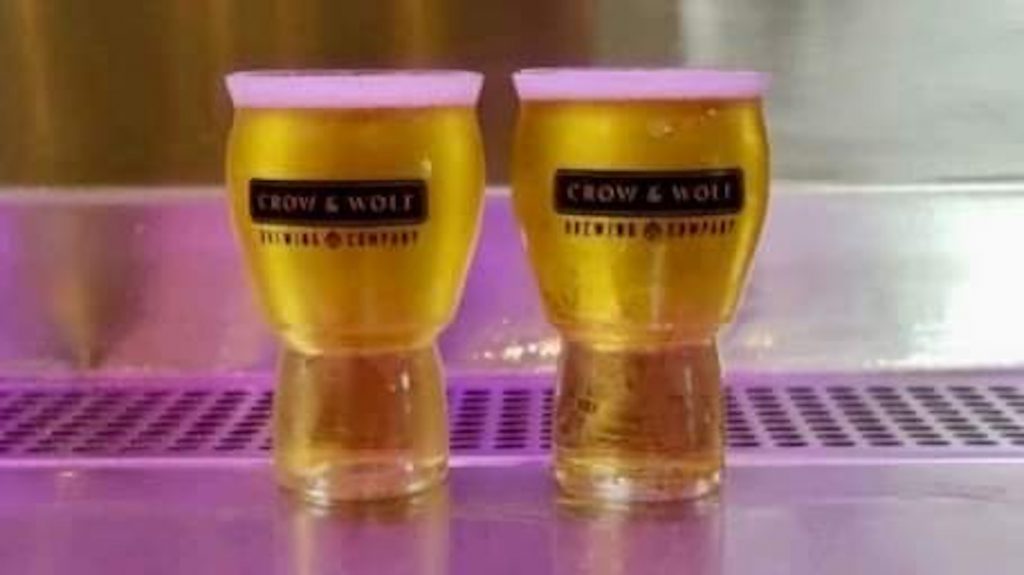
| RESULTS |
A total of 22 people of varying levels of experience participated in this xBmt. Each participant was served 2 samples of the beer stored in a Crowler and 1 sample of the beer served fresh off the tap in different colored opaque cups then asked to identify the unique sample. While 12 tasters (p<0.05) would have had to accurately identify the unique sample in order to reach statistical significance, 9 did (p=0.29), indicating participants in this xBmt were unable to reliably distinguish an American IPA stored for 2 weeks in a Crowler from one served fresh off the tap.
My Impressions: Out of the 5 semi-blind triangle tests I attempted, I correctly identified the odd-beer-out 3 times, though I’ll admit that they were all just random guesses, as these beers were identical in every way to my senses.
| DISCUSSION |
There are a number of deleterious things that can happen when transporting beer from a brewery taproom, not only due to the exposure to open air that occurs when the beer flows from the faucet, but the vessels uses can pose various issues as well. Crowlers reduce this risk due to the fact they’re completely sealed after being filled, ostensibly extending the shelf-life of the beer stored within. Offering some support for this claim, tasters in this xBmt were unable to reliably distinguish an American IPA that was stored in a Crowler for 2 weeks from one that was served fresh from the tap.
It’s likely most people consume the beer they take home from a brewery relatively quickly, before any negative effects occur, though these results seem to suggest that Crowlers are capable of maintaining the freshness of an IPA even after 2 weeks. This is particularly promising considering how sensitive hoppy styles tend to be.
Commercial brewers go to great lengths to ensure their customers have the most positive experience with their product as possible, which is difficult to manage once their beer leaves their facility. The fact a beer stored in a Crowler for 2 weeks was perceptibly similar to one served fresh off the tap not only validates the use of Crowlers in the commercial setting, but may increase both brewer and consumer confidence in the quality of the product being taken home. While I look forward to further testing on this variable, I’ll certainly worry less about those Crowlers I toss in my fridge and only get to when I recall putting them in there a couple weeks later.
If you have any thoughts about this xBmt, please do not hesitate to share in the comments section below!
Support Brülosophy In Style!
All designs are available in various colors and sizes on Amazon!
Follow Brülosophy on:
FACEBOOK | TWITTER | INSTAGRAM
If you enjoy this stuff and feel compelled to support Brulosophy.com, please check out the Support page for details on how you can very easily do so. Thanks!



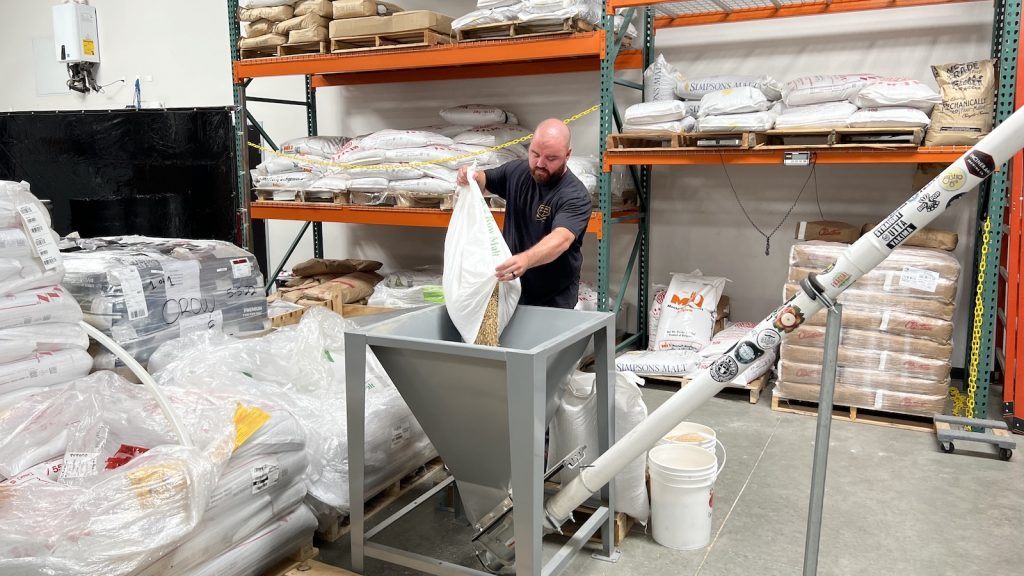
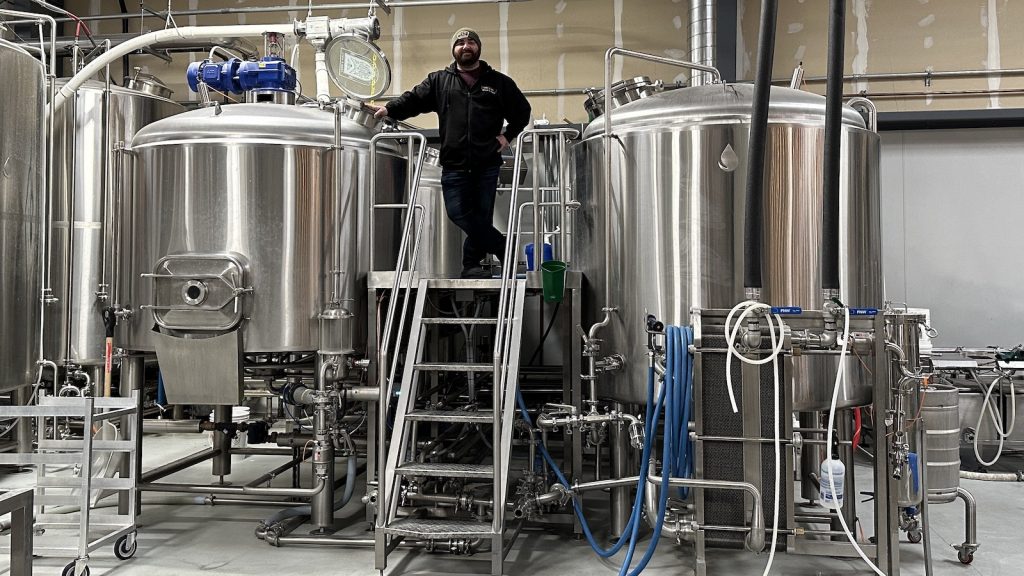
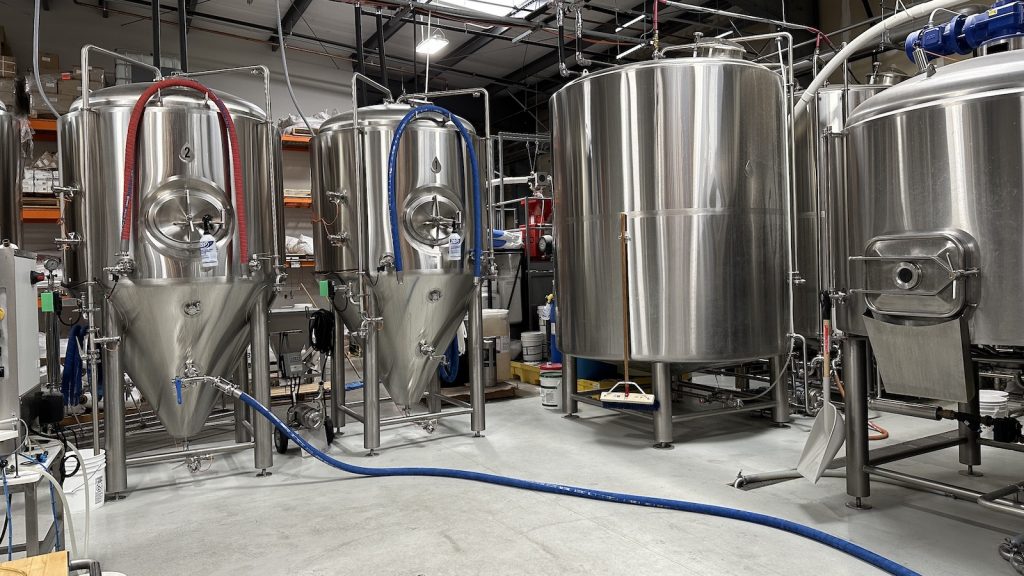
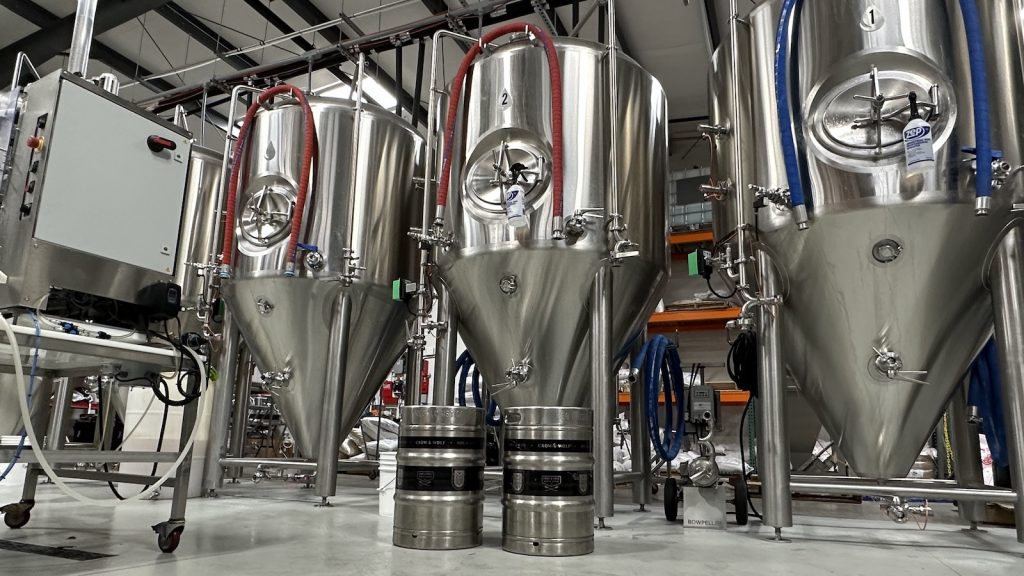
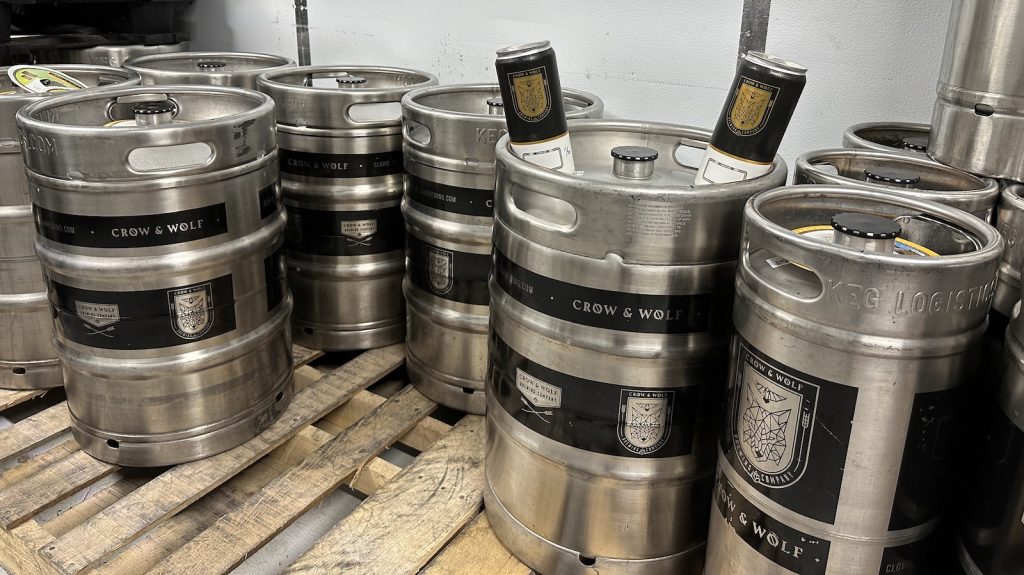
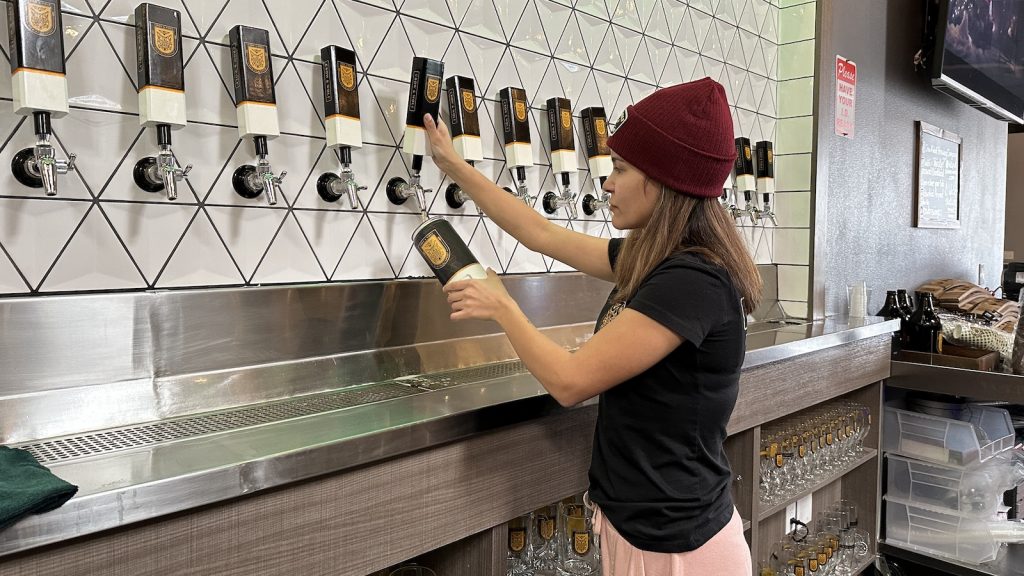











10 thoughts on “ProBrü exBEERiment | Impact Crowler Storage Has On American IPA”
I would not say not the Crowler but the Temperature from de cold box was the responsible for the “extended shell life”. I bet if several bottles were filled from the tap, capped on foam, and left on the cold box along with the kegs, a blind test would not reach a statistical significance as well.
This one looks like a classical shark attack vs ice cream sales correlation case.
Wouldn’t the cold box be the best simulation of real life – you go to the taproom, have a beer or two, get some crowlers, head home, and stash the crowlers in the fridge until you feel like drinking them? I’ve never stored a crowler warm if that’s what you mean.
That’s not what I meant.
My point is, it was not the container (crowler) that kept the beer as fresh as the beer in the keg, but the cold room temperature that kept booth (keg and crowler) fresh.
Variables (crowler and beer fresh) are correlated, but this correlation does not imply causation.
If you have the time, take a look at this pots that correlation and causation.
https://www.kdnuggets.com/2019/01/dr-data-ice-cream-linked-shark-attacks.html
Resuming: In the summer both shark attacks and ice cream sales increase. Both variables are linked / correlated. But they do not have causal relationship. If so, one could submit a public law that selling ice cream during the summer is prohibited in order to decrease shark attacks :).
Regarding what would be the best test simulation, you have a point, I would not expect anyone storing the beer warm. So we would have to figure out other variable to get to the conclusion if crowler is the best container for taking beer home and keep if fresh for 2w. That could be filling cans, growlers or any other container from the tap and living them in the cold box, them making triangular tests with them as well, for instance. Or keeping the Crowler at fridge temperature at least (4-8C – 39-46F)
The way the test was designed I do not conclude at all that crowler is the best “variable” to keep beer fresh in a 2 week time frame but low temperature (I’m implying that the cold box is at least at -1C /30F, that’s the temperature I see tap rooms usually set).
Two weeks!? I once bought a mate a crowler for his birthday. I found it unopened in the back of his fridge TWO YEARS later (he’s a bachelor who, it turns out, doesn’t like IPAs). I decided that before we dumped the stale beer down the sink I’d give it a taste: it was delicious and, I believe, identical to a fresh crowler of the same beer. I couldn’t believe it.
This is one XB that turned out pretty much how I would have expected. I think people have an expectation that because a crowler is a sealed can, it shouldn’t have the same issues as growlers with shelf stability. But both suffer from O2 exposure at filling, and after a week (maybe less), the beer just gets stale. Growlers just happen to have the additional drawback of also losing carbonation. It’s also the reason I typically won’t get grab and go beer from smaller breweries. Often times the cans in the cooler are filled on the crowler machine.
You seem to contradict yourself here? You say the experiment turned out as expected, and then immediately state the opposite of what the experiment showed…
I think the main thing here is that this experiment tested what most of us want to know. Can I leave a crowler in the fridge for a couple of weeks or do I need to drink it in a day or two?
Anything more than that would require lab equipment and may only find differences that few or none could taste. It is the practical nature of the hypotheses, design and execution of these experiments that makes their results useful to me and it is what keeps me coming back to this site.
Thanks for all you do and for keeping homebrewers [rather than the members of The American Society of Brewing Chemists] in mind when creating content and experiments.
It’s not the crowler that’s in question. I would actually ask how solid their kegging process is. A crowler poured from a tap should definitely show some slight signs on hop aroma and flavor degradation verses a keg.